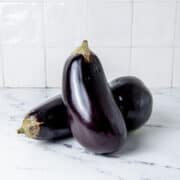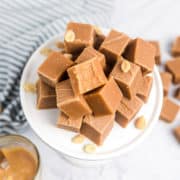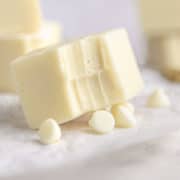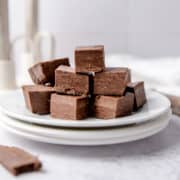Eggplant is a purple-skinned, egg-shaped vegetable that can be used to make various savory recipes. Once you know how to store eggplant, you will be able to keep it tasty and fresh for longer.
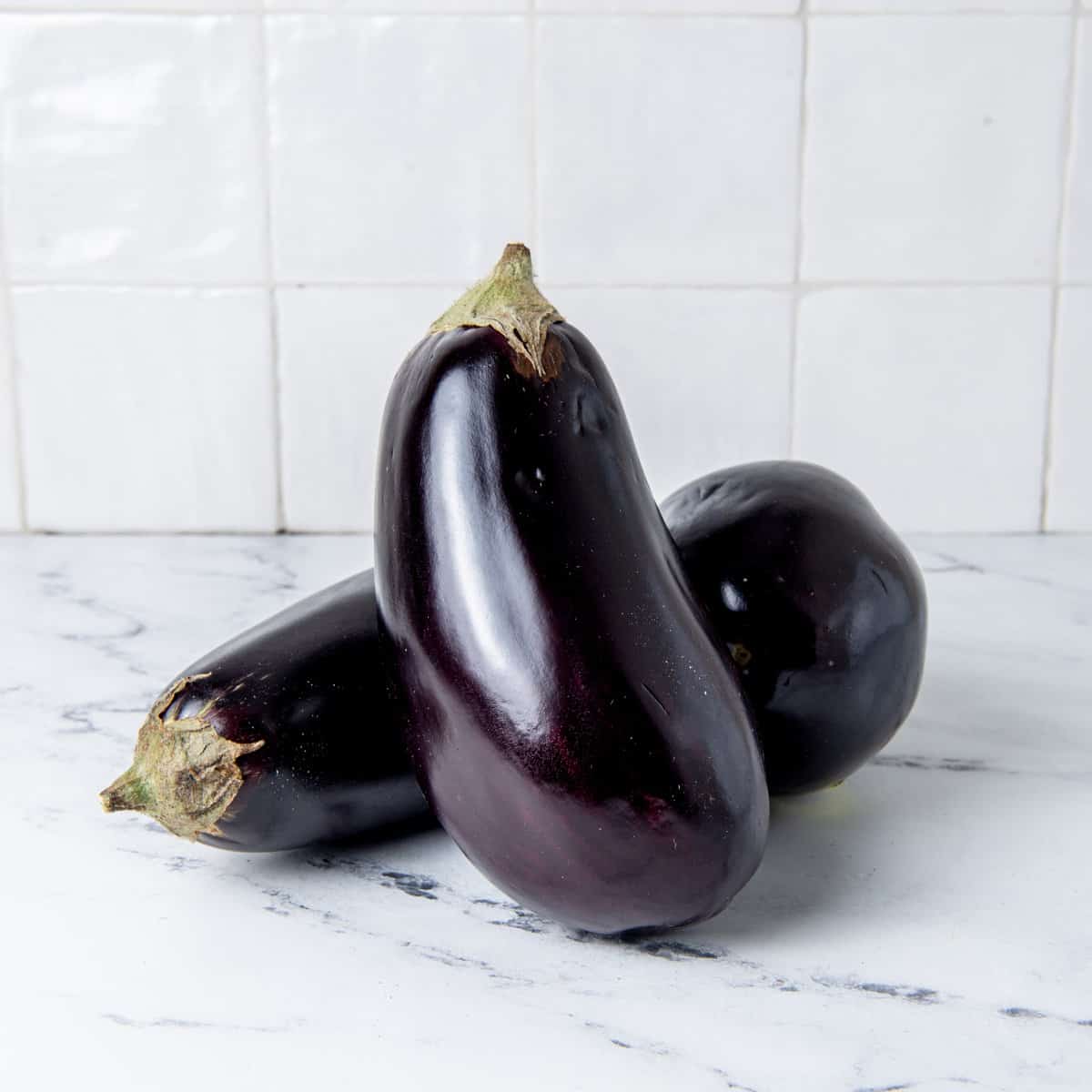
Jump to:
The most famous dish using eggplant is perhaps moussaka, a layered Greek recipe with spiced meat. Fresh eggplant can be cooked in a variety of ways, such as roasting, baking, grilling, and microwaving. You can also stuff it or use it in dips. Thick slices of eggplant fried in olive oil make a delicious side dish and pickled eggplants are my favorite in a ham and cheese grinder.
I recently discovered how good eggplant is in stir-fries. It has a relatively short cooking time like squash and adds a softer texture to the dish to contrast with anything crunchy you're adding like carrot or broccoli. Since the skin and seeds are edible, prepping eggplant is quick and easy.
What is Eggplant?
Eggplant (Solanum Melongena) is a member of the nightshade family, which includes okra, zucchini, and tomatoes. The flavor is tender, sweet, and mild, with a touch of bitterness. Eggplants come in various shapes, colors, and sizes.
The smallest variety measures just a couple of inches in length and the larger ones can be over 12 inches long. Colors range from yellow, reddish, and green to dark purple, light purple, and even striped. Italian eggplants and globe eggplant are the most common cultivars in the United States.
The best place to find interesting varieties is at a farmers' market, and since they all taste similar, you can usually substitute one kind of eggplant for another in a recipe.
Vitamins A, C, and K, folate, calcium, iron, potassium, and some other minerals are found in eggplant, making them a nutritious choice.
Eggplant is believed to have originated in India and still grows wild there. It's also grown in China for more than 1,500 years. Arabs introduced this vegetable into Europe as trade routes opened up and the Persians brought it to Africa. Spanish explorers brought it to the New World and both purple and white eggplant cultivars could be found in American gardens by the beginning of the 19th century.
How to Choose the Best Quality Eggplant
Plumpness and firmness are traits to look for when shopping for eggplant because as this vegetable gets older, it begins to soften. Minor soft spots can be trimmed off, but avoid anything with more than that.
Other desirable traits are a glossy shine and smooth skin. The top should be firmly attached and free from mold, and the base should have a cleft.
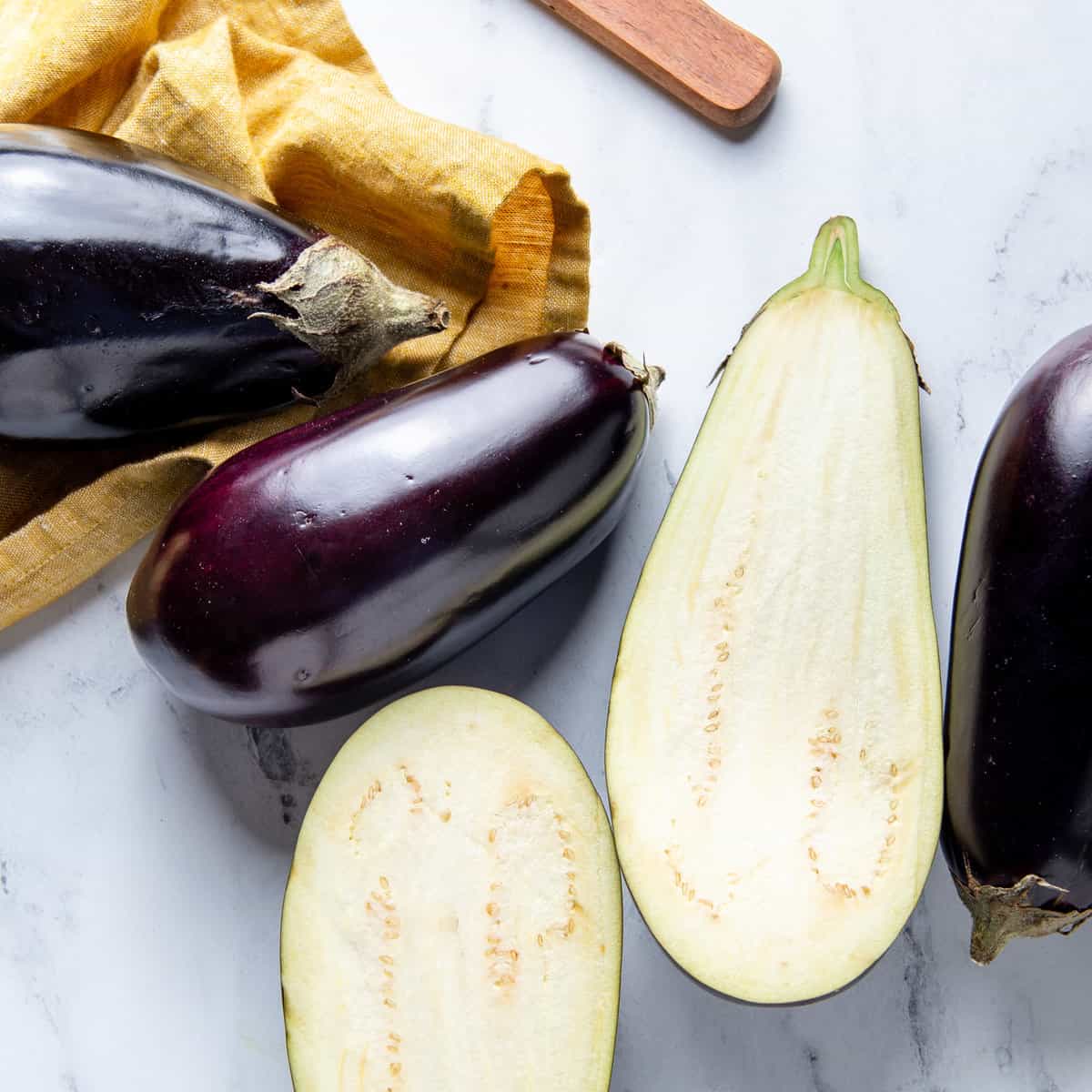
How to Store Eggplant
The best way to store grocery store eggplant depends on how you plan to cook it and how long you want it to last. Bear in mind that even when stored in the right place, eggplant is delicate and its storage time will only be a few days. The following tips will help.
- Put the eggplant in a paper bag or wrap it in a paper towel, because it keeps longer in something breathable rather than in plastic wrap or an airtight container.
- If you have more than one, wrap each one in paper towels to keep them apart.
- The ideal temperature for eggplant is between 50°F and 54°F, since this vegetable is rather delicate and doesn't like very hot or very cold temperatures, so don't put it in the crisper drawer or expose it to direct sunlight.
- Cool room temperature in a well-ventilated, dry place is the best option for whole eggplants, so consider the kitchen counter, pantry, cupboard, or even the basement or garage.
- Keep raw eggplant away from ethylene gas-producing fruits and vegetables, or else it will spoil faster. An eggplant kept next to a banana will only keep for about a day for this reason!
- Even when stored correctly in a dark place at the right temperature, eggplant just doesn't have a long shelf life, so use it within 3 days for the best results.
Eggplant can also be frozen for long-term storage if you have more than you can use right away. If you want to choose this storage method, chop and blanch the eggplant in boiling water for a few minutes, then plunge it into ice water. Once the eggplant slices are cool, put them in resealable bags or freezer bags and freeze them.
You can also freeze them without blanching, but they will be mushy when thawed, so only good for soups and so on. When prepared this way, eggplant will keep for several months and this is a great way to store eggplants if they're already past their prime.
How to Tell if Eggplant is Rotten
A firm, plump eggplant is perfectly fresh, so the opposite is true about spoiled eggplant. Reject any which are brown, mushy, or smell bad. Also, avoid eggplants that are leaking liquid or which have visible mold on them.
Common Questions
This vegetable has a slight bitterness which some people don't like. To remove this flavor, you can slice the eggplant, sprinkle over salt and leave it for half an hour or a longer time. The salt draws up the bitter liquid. Rinse the salt off and pat off any excess moisture with a paper towel. Proceed with your eggplant parmesan, baba ghanoush, or whichever eggplant recipes you're making.
The skin is edible, but it can be chewy and thick, so peel it with a vegetable peeler if you prefer to remove it. Some people like to leave it on, so whichever you prefer is fine. If you aren't peeling it, wash the eggplant well to remove any dirt or debris.

Interesting Facts
- Other names for eggplant are aubergine and brinjal.
- Eggplant contains nicotine, or nicotinoid alkaloids, as do tomatoes, potatoes, and bell peppers, but the amount is so tiny you'd have to eat 20 whole eggplants to equal the nicotine in one cigarette.
- China is the largest producer of eggplant in the world and grows around 29 million tons every year.
Once you know how to store eggplant, you can maximize the shelf life of this flavorful and distinctive-tasting vegetable and discover your own favorite ways of cooking it.
